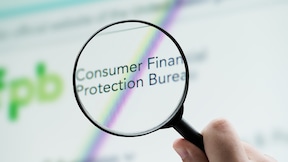Building credit
Credit cards are among the most common types of credit offered to consumers. And your credit score serves as a gauge of your creditworthiness.
The basics of building credit
Check out our tips to building credit, improving your credit score or establishing credit for the first time.
build creditCredit challenges for gig economy workers and freelancers

Having a gig economy job can pose challenges to managing credit. Learn about its effects on credit products and effective ways to manage your credit.
build creditNeed money now? 5 ways to find cash fast

Learn how thoughtful planning and smart techniques can help you maximize your savings and make every purchase count.
build creditWhat is the Consumer Financial Protection Bureau (CFPB)?

Learn some things you need to know about the CFPB. Discover its functions and ways it protects consumers.
Learn more about the importance of credit scores
build credit
Credit challenges for gig economy workers and freelancers Having a gig economy job can pose challenges to managing credit. Learn about its effects on credit products and effective ways to manage your credit.
Having a gig economy job can pose challenges to managing credit. Learn about its effects on credit products and effective ways to manage your credit.build credit
Side hustles to help pay off debt Help tackle debt with side hustles! Discover strategies to maximize earnings and accelerate your path to paying off debt.
Help tackle debt with side hustles! Discover strategies to maximize earnings and accelerate your path to paying off debt.build credit
How debt consolidation loans can impact your credit Explore how debt consolidation loans may affect your credit score. Learn about potential impacts, from initial inquiries to long-term benefits of simplified payments.
Explore how debt consolidation loans may affect your credit score. Learn about potential impacts, from initial inquiries to long-term benefits of simplified payments.build credit
What are goodwill letters and do they help your credit score? Goodwill letters are written requests to creditors to remove a negative mark from your report. Learn what they are, what to include and other options.
Goodwill letters are written requests to creditors to remove a negative mark from your report. Learn what they are, what to include and other options.Credit cards
Understanding business credit reports Learn what business credit reports are, how to access them and why they can be crucial for a business's financial health.
Learn what business credit reports are, how to access them and why they can be crucial for a business's financial health.Credit cards
Does an LLC have a credit score? Learn whether LLCs have credit scores and why they matter.
Learn whether LLCs have credit scores and why they matter.build credit
Common causes of bad credit Explore causes of bad credit. Awareness of your financial habits can help you make informed decisions for a healthier credit score.
Explore causes of bad credit. Awareness of your financial habits can help you make informed decisions for a healthier credit score.Credit cards
Getting a student loan with bad credit: What options are there? It may be possible to get approved for a student loan with bad credit. Discover some potential options here.
It may be possible to get approved for a student loan with bad credit. Discover some potential options here.
Explore financial education